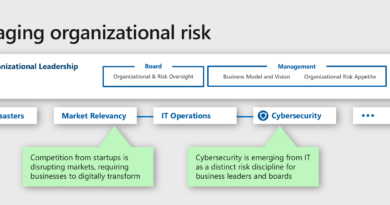How Do I Make My Windows 10 Computer Run Faster? (Part 1)

We’ve all been there. You get your shiny home PC or laptop back from the store and unboxed and everything is perfect. It runs like a dream: starting up quickly, speeding you through internet searches and web browsing, and applications open in the blink of an eye. But then over the following months, gradually things begin to sour. As extra programs and files are added over time, the machine seems to struggle under the weight of it all, slowing down or acting funny.
It can all be a trying experience—hitting home workers particularly hard but inconveniencing the entire family. That’s why we’ve put together a handy two-part guide for Windows 10 users. It’s not an exhaustive list but provides 10 quick-and-easy ways you can optimize the performance of your machine.
When our advice gets a little more complicated we’ve included a step-by-step guide and screenshots to help you on your way.
Getting the basics right
1. Keep Windows updated
Here’s the first “no brainer.” Perhaps the quickest and easiest way to keep your Windows 10 machine running at optimum performance is to keep it updated at all times. Microsoft is constantly working on ways to improve Windows, so it makes sense to be on the latest and greatest version. Thanks to Windows Update, when a new software version is available it will automatically download and install, but you can double check and manually update by going to the Start button then Settings > Update & security > Windows Update, and click Check for updates. If there are updates, they’ll download and install. Reboot your computer and you’re ready to resume working.

2. Shut completely down / restart periodically
This might sound like another no-brainer, but it can help: note that using Start > Power > Sleep or Hibernate to “shut down” your PC or laptop and then resuming by clicking your mouse or hitting your spacebar is not enough to “optimize” your computer— though it “wakes” it more quickly than a full Restart. Fully restarting your machine on a regular basis (at least once a week, or when you need to) clears out the memory and kills any processes that might be quietly consuming too many resources—and you need a full Restart completely to get these benefits.3. Scan for malware
While keeping your computer updated with the latest version of Windows will also maximize protection from online threats that can slow it down, you can go one step further by running an anti-malware scan with your endpoint security software, to see if there are any other nasties lurking on your computer. This should clean out any malware and, as Trend Micro Security does, help to optimize it as well.
4. Change your power settings
Windows 10 features a Power Saving mode which is particularly useful for laptop users on the move. However, if you’re plugged in and don’t care about energy usage and want to get the most out of your computer, choose the “high performance” option. Go to Start > Settings > System > Power & sleep > Additional power settings.

5. Use Windows tools to help you
Fortunately, Windows also has built-in tools that you can use to fix problems and find out more about any issues your machine may have.
First is the Troubleshoot tools. Go to Start > Settings > Update & Security > Troubleshoot and you’ll be presented with a long list of things you can run the troubleshoot tool on to get something working right or to improve performance, including internet connection, keyboard and printer, blue screen, and many others.

6. Task Manager is your friend
Second is Task Manager. We all like to have multiple applications open at the same time, but they can use up your PC’s CPU and Memory, which can affect performance. Here’s where Task Manager comes in. Right-click in the Task Bar, then select Task Manager to open the app.

In the Processes tab, you’ll be able to view how much CPU and Memory (as well as Disk, Network, and GPU) your applications are using combined as a percentage (click at the top to sort/reverse sort) and then what they use individually. If the percentage of an App is particularly high, consider ending the task for the time being by Right-clicking on it and selecting End task for the most Memory-intensive ones—although remember that this will make them temporarily unavailable. Also, be wary of killing Background processes as these may be important.
Another option is to prevent certain apps from loading on start-up, which can speed things up when you switch your computer on. Under the Startup tab in Task Manager your apps should be listed alongside their Start-up impact. Click at the top to sort/reverse sort the column (to show all those with the highest impact), then Right-click and Disable them here.

Note also the Performance tab gives you a live view especially of your CPU and Memory usage, as well as other performance indicators. Just select the item you want to view.

Come back for How Do I Make My Windows 10 Computer Run Faster: Part 2 when we’ll be listing even more ways you can optimize the performance of your Windows 10 PC.
Read More HERE



